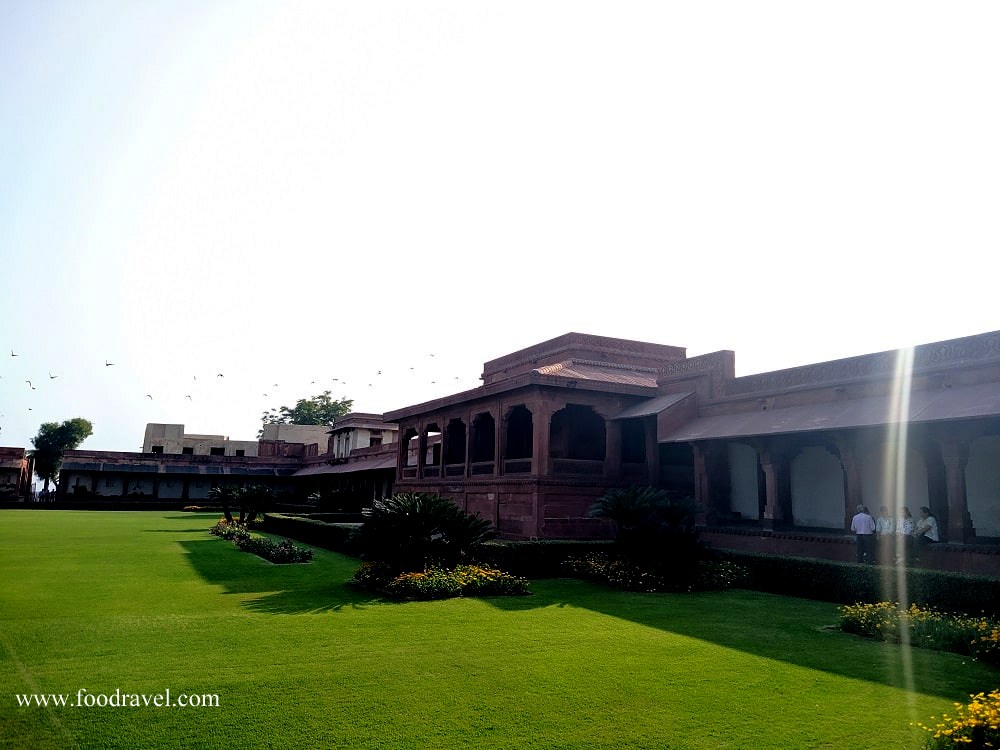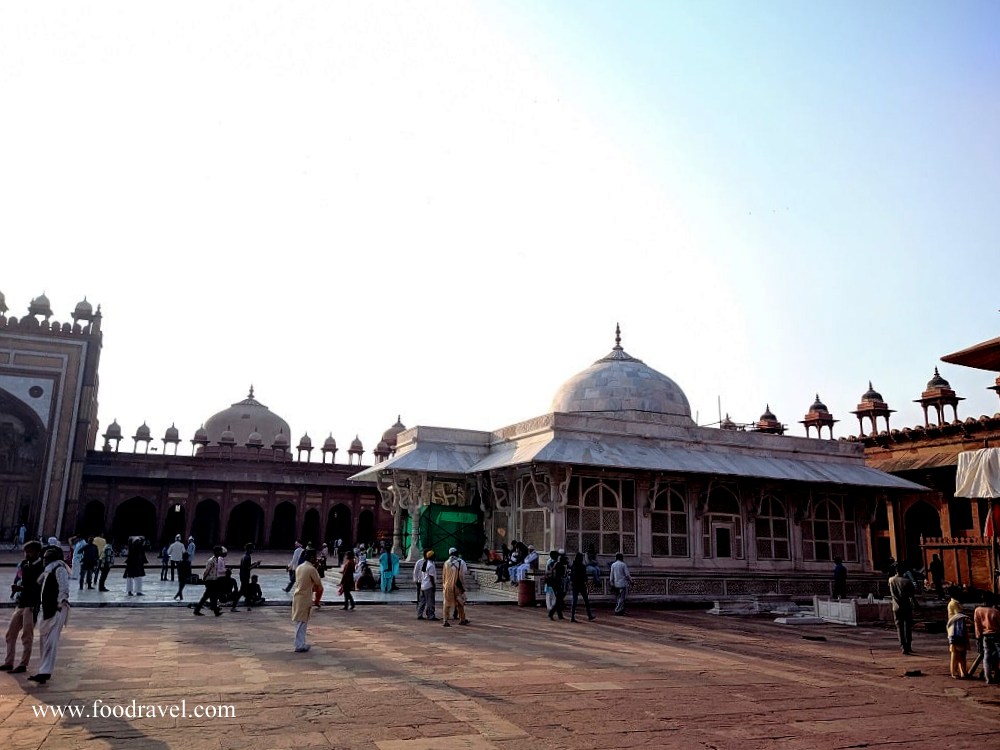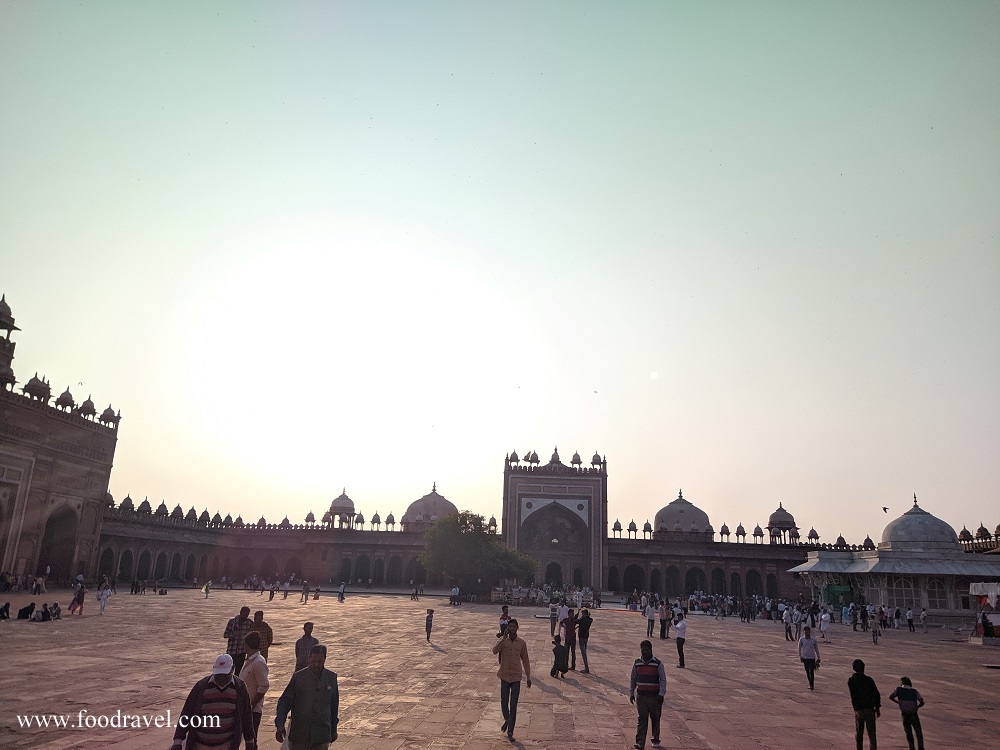Some 40 KM away from Agra city which is dotted with world-famous white marble mausoleums, Fatehpur Sikri welcomes you with its red sandstone monuments and impressive architectures that set it apart from what you see in Agra. While Agra has Taj Mahal and Itimad-ud-Daulah’s tomb which were chiefly constructed with white marble, adorned with pietra dura, the monuments of Fatehpur Sikri differ both in architecture and planning. There are a lot of places to visit in Fatehpur Sikri and a lot to explore about its glorious past.
Akbar dreamt of a city and he built it. But later, it was left abandoned and the Fatehpur Sikri, which once flourished, happened to be the royal place for the emperor and his family came to a situation where the palaces and monuments were ignored. Years later, restoration work was carried out to revoke the sleeping charm of Sikri so that glory can shine again.
I travel to explore and travel to learn. I grew up reading about this place in history textbooks and I had thought to visit there one day. The day came and I found myself surrounded by the red sandstone palaces and pavilions of Fatehpur Sikri where once the Mughal emperors resided, though not for long. Akbar built three palaces for his three wives and Fatehpur Sikri was made the capital for a short span of time.

Fatehpur Sikri holds a great historic significance in the history of Medieval India where Mughal reign was at its peak. The emperor commissioned several monuments which set an incredible example of marvelous architecture and design. Itimad-ud-Daulah’s tomb is known to be the first monument that was constructed with white marble and served as a draft for Taj Mahal. Akbar’s dream to build Fatehpur Sikri reflects his fine understanding of art and architecture. There are a lot of places to visit in Fatehpur Sikri which will impress you with art, design, and architecture. Check below the top places to visit in Fatehpur Sikri:

1. Jodha Bai’s Palace
I was eager to visit Jodha Bai’s Palace. While growing up, I got to listen a lot about Akbar and Jodha, and the subject was even adapted in movies. Jodha Bai was born a Hindu-Rajput princess to Raja Bharmal of Amber. The largest building to visit in Fatehpur Sikri, Jodha Bai’s palace is surrounded by boundaries. From inside, the palace of Jodha Bai differs from the rest of the architecture of Fatehpur Sikri. The palace is a homogenous mixture of both Hindu and Muslim architectural styles. The walls have been carved with temple bells, lotus, hams parrots, etc.


2. Diwan-I-Khas
Among the most famous parts of Mughal fort architectures, Diwan-i-Khas used to be a court for royal people and private audiences only. As the word Khas translates to private or personal, Diwan-i-Khas was the area where the Mughals used to sit for private meetings and leisure purposes. This majestically beautiful building has lots of structures within and architecturally, the most intriguing is the Lotus Throne. This two storyed building is made up of a square plan with red sandstone.
Read here – Amer Fort Jaipur

3. Lotus Throne
I was impressed with the kind of architecture Lotus throne has. Akbar used to sit on this throne to command and address his court people. Lotus throne is a giant structure on which the emperor’s throne was put. If you have an understanding of various architectural forms, you will find the impressions of Buddhist, Christian, Muslim, and Hindu architecture in Lotus throne. The idea was to reflect the Din-i-ilahi philosophy which Akbar had started.
Read Here – Kanch Mahal Sikandra

4. Panch Mahal
Among the most impressive places to visit in Fatehpur Sikri is Panch Mahal. Panch translates to five and Mahal translates to palace in English. This monument has five floors of red sandstone. Located near Jodha Bai’s Palace, Panch Mahal reflects the Persian style of architecture. The ground floor is the largest and as you move to the top, the area descends making the top floor the smallest. It is said that during Akbar’s time, there used to be several musical and art performances.
Read Here – Akbar’s Tomb Sikandra

5. Diwan-I-Aam
Diwan-I-Aam was the area used for the general public. You will find it in most of the forts, be it Red fort of Delhi or Agra Fort. This was the public court where Akbar used to listen the complaints, suggestions, etc. of the public every morning. This place was also used for celebrations and prayers by the general public. Diwan-I-Aam has three parts i.e. public space at the front, a central area for the emperor, and an adjacent area for the royal women. You will see Turkic baths in the southwest here.


6. Birbal’s Palace
Among the top attractions to visit in Fatehpur Sikri is Birbal’s Palace. This palace has a double-dome design and follows the traditional Mughal style. This two storyed monument has four rooms on the ground floor and two rooms on the top floor. The rooms are connected with each other through open doorways. Akbar got this palace built for his favorite person from the Nine Jewels of the court, Birbal who is known for his wit and intellectuality. The palace has intricate carvings on pilasters and the roof has towers with domes.
Read Here – An unknown monument inside Akbar’s Tomb complex
Image source – Trawell.in

7. Anup Talao
Talao means a water body (pool or tank). Anup Talao (peerless pool) was constructed right outside the personal quarters of Emperor Akbar. It faces Khawabgah and has a nicely planned architectural style. Four causeways connect the talao from all four sides. According to some old texts, it is believed that several coins (gold and silver) were put in the talao to create an impressive shimmering effect whenever the sunrays hit the coins in the tank. In his memoirs, Jahangir mentioned that he distributed coins of around one crore three lakhs for charity purposes.

8. Khwabgah
Khwabgah or dream palace is one of the most beautiful places to visit in Fatehpur Sikri. A part of the royal complex, Khwabgah served as the private palace of the king. The palace has two floors where the first floor with two rooms has simple architecture while the top floor is incredibly adorned. The rooms on the ground floors are believed to be the library and dining hall for the emperor. It is also connected to Daulat Khana. The library, Kutub Khana, is said to have around 25000 manuscripts and several other official documents. It is also said that the emperor used to have secret meetings in one of the rooms here.

9. Buland Darwaza
Buland Darwaza (Gate of Glory) was built after Akbar won the battle over Khandesh. It was constructed in 1602 and is one of the most impressive monuments to visit in Fatehpur Sikri. Buland Darwaza is considered to be among the highest gates in the world. The gate with a height of 54 meters has 43 stairs which lead to the court of the mosque. This semi-octagonal gate is built in red and buff sandstone and looks impressive, topped by chhatris. This gate wasn’t a part of Jama Masjid initially. It is one of the most famous places to visit in Fatehpur Sikri.
Read Here – Humayun’s Tomb

10. Jama Masjid
Among the largest mosques of the country, Jama Masjid at Fatehpur Sikri was built by Akbar from 1571 – 72 and is also called Friday Mosque. The rectangular mosque reflects the Islamic art transition with Persian elements. The mosque is based on a raised platform and has a massive courtyard. There are three different gateways i.e. South, East, and North. Badshahi Darwaza is located on the east side. Buland Darwaza which is located on the southern side and Salim Chishti Tomb are a part of the mosque.

Other than these top ten places to visit in Fatehpur Sikri, Salim Chishti Tomb is also famous. This impressive white monument was built around 1580 – 81. The burial palace of Sufi saint Salim Chishti, it was built by Akbar to pay his respect to the saint.

When you plan to visit Fatehpur Sikri, make sure that you dedicate a complete day for your visit. However, I have only included the top ten places to visit in Fatehpur Sikri but the list is long and lacks other significant monuments which one shouldn’t miss while visiting here. In this blog, I have tried to cover top attractions as a part of Fatehpur Sikri travel guide. I hope you liked this blog post.
![]()


